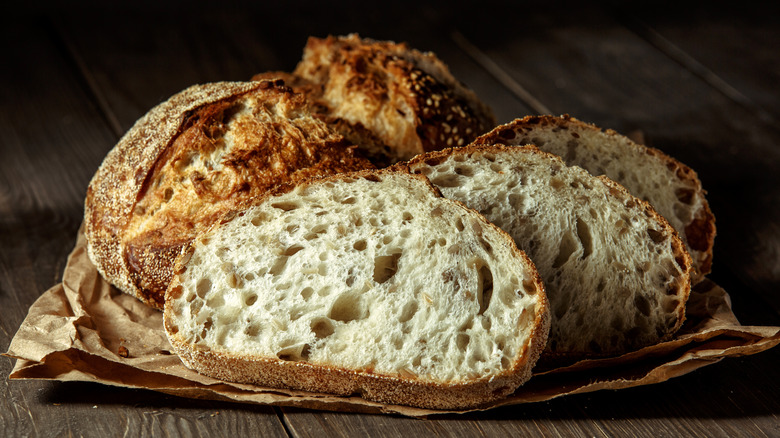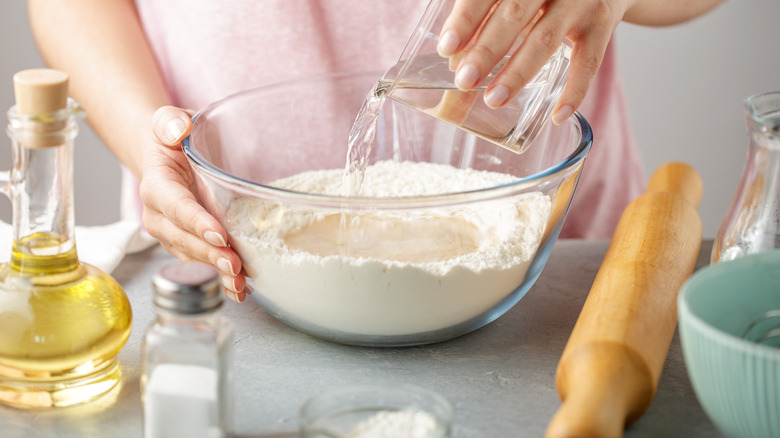How You Should Be Adding Water When Baking Bread
Anyone who's ever made homemade bread knows that there are a lot of factors at play when doing so. From the humidity in the room to the amount of time you let the dough rise — every little thing affects how your bread will look and taste when it comes out of the oven. The way you add the water and how much of it you do is no exception. The reason, Busby's Bakery shares, is that water directly affects the formation of gluten. The wetter a dough is, the longer the gluten strands can get, and that's exactly what you want in bread because it results in a softer crumb.
Instead of adding water solely based on the measurements in the recipe, Busby's Bakery says it's better to use the consistency of the dough as your guide. Dough with not enough water will not only feel dry to the touch, but will also be difficult to stretch. If that's the case, you'll want to add water before the dough has the chance to proof and damage the gluten. Add the water little by little until the dough is wet, but not sticky.
Don't overlook the temperature of the water when making bread
You may have heard that using warm water when making bread is ideal because it activates the yeast, but not only is it unnecessary, it actually disrupts the formation of gluten. According to Loafy Bread, when you use warm water, the dough stays warm, causing the yeast to ferment faster. Then, instead of the dough having a stretchy consistency, it'll tear easily and develop a sour taste. To prevent this from happening, you'll need to prolong the fermenting process and keep the dough cool, and the best way to go about it is to use ice water.
As Cook's Illustrated explains, when the dough starts off cold and stays cold, the yeast is able to create gas bubbles gradually. This is what makes the dough easy to work with and allows it to hold its shape. For best results, combine equal parts ice and water and wait five minutes before you add it to your recipe.

